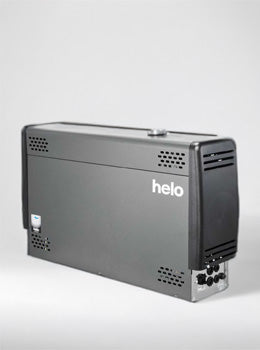
7. Sauna Detoxification & Fat Loss
DETOXIFICATION
Detoxification is one of the commonly referred to ‘benefits’ of sauna use and is one that can be seen time and time again on the websites of sauna companies and health blogs alike. The usual assertion is that sauna bathing will ‘cleanse the body of toxins’ or otherwise ‘detoxify’ you by allowing you to organically sweat out all the harmful chemicals and toxins accumulating in your body. Many will go as far as to confidently cite complex physiological processes to back up their assertions – although these are very rarely referenced with any real evidence.
Often, this misinformation is driven by ignorance, misunderstandings, and/or a focus on acquiring sales exclusively as opposed to providing an authentic service. As such, we have compiled a brief summary of the current scientific literature concerning saunas and detoxification. Of course, this is only an overview; if you would like you to know more, you can find some relevant and comprehensive scientific articles at the bottom of this page. You can also research the matter yourself using websites such as ‘Web of Science’ and ‘Science Direct’, which are specialised online databases dedicated to providing accurate peer-reviewed and scientific information.
What is detoxification and how does it actually work?
Detoxification is a generic term for the continuous physiological processes through which toxins are broken down and excreted from the body in the form of faeces, urine, sweat, and expired air. It is performed primarily by the liver and kidneys, although the digestive tract, lungs, and skin are also involved. The ‘toxins’ themselves are various harmful substances which are bioaccumulated from the environment and our own metabolic functions, although when it comes to environmental toxins the word has adopted a rather ill-defined definition; encompassing various pollutants, synthetic chemicals, heavy metals, and other harmful products [1].

To discuss how detoxification works, it would take multiple books-worth of explanation to comprehensively outline and describe. Even then, there are many processes and substances involved that are still not entirely understood [2]. In its simplest forms, detoxification involves continuous cycles of excretion and re-absorption which work to maintain homeostasis. Upon initially entering the circulatory system, the vast majority of toxins are shunted to the liver for processing and elimination. Lipophilic compounds (meaning they dissolve in lipids and fats) will be excreted primarily through faecal excretion, while hydrophilic compounds (those attracted to/ dissolved by water) will do so in the urine [3].
As for where sweat comes into this process; perspiration does excrete various chemicals and xenobiotics (chemical substances found within an organism that does not naturally produce or contain them) [3]. This is the tiny grain of truth many companies utilise when weaving the extensive lies that appear on their blog and sales pages. However, it has since been discovered it these toxins are present in such minute amounts that it cannot be shown to have any kind of notable impact on bioaccumulation and health [4]. Sweat is 99% water, and even if it did contain more toxins (e.g. the same amounts as urine) the sheer quantity of perspiration needed to have any discernible effects would be impossible to achieve – especially considering the increased food and liquid intake it would necessitate [4]. In short, yes, your sweat contains toxins and heavy metals. No, it is nowhere near enough to make any kind of notable impact on your health.
So, how does sauna bathing affect detoxification?
Through perspiration? Negligibly. The purpose of sweat is thermoregulation, not detoxification. The ‘toxin’ content of sweat is so low that no amount of perspiration will have any kind of significant effect on health and wellbeing in this respect.
Through improving overall health as part of a broader health-focused lifestyle? Significantly more so. As the other sections included in this overview of sauna’s effects show, sauna bathing can have considerable benefits for both physical and mental health. Its impact on stress, for example, has the potential to have significant positive effects on liver function – the organ actually responsible for detoxification [5]. It is often actually these more generalised sauna influences on overall health and wellbeing that many people will attribute to being ‘detoxified’. Still, it is important to note that the different types of saunas will vary in the extent of their benefits; Finnish saunas, for example, provide far more extensive and varying health benefits compared to infrared saunas.
Note: this section is regarding homeostatic detoxification, not the process of weaning patients off addictive substances such as alcohol (which is also called ‘detoxification’). Sauna bathing’s effects regarding this can be found in the next section in our series.
References
[1] Klaassen, CD and Watkins III, JB (2015) Casarett & Doull’s essentials of toxicology, 3edn. The mcgraw-hill companies: USA
[2] Genuis, SJ et al (2011) ‘Blood, urine, and sweat (BUS) study: Monitoring and elimination of bioaccumulated toxic elements’ Archives of Environmental Contamination and Toxicology 61(2) pp. 344-357. Available at: https://www.ncbi.nlm.nih.gov/pubmed/21057782
[3] Genuis, SJ (2010) ‘Elimination of persistent toxicants from the human body’ Human and Experimental Toxicology 30(1) pp. 3-18. Available at: https://www.ncbi.nlm.nih.gov/pubmed/20400489
[4] Imbeault, P; Ravanelli, N; Chevrier, J (2018) ‘Can POPs be substantially popped out through sweat?’ Environmental International (111) pp. 131-132. Available at: https://www.sciencedirect.com/science/article/pii/S0160412017319761
[5] Vere, CC et al (2009) ‘Psychosocial stress and liver disease status’ World Journal of Gastroenterology 15(24) pp. 2980-2986. Available at: https://www.ncbi.nlm.nih.gov/pmc/articles/PMC2702105/
FAT LOSS
A common sight on many sauna websites and forums is a statement about the amazing instantaneous weight loss effects of sauna bathing. Whilst this statement is not incorrect, it is misleading; it causes many readers to assume weight loss = fat loss when in actuality the immediate loss of weight observed after sauna bathing is due entirely to water loss as a consequence of increased perspiration. That is not to say sauna bathing is not an effective tool to aid in fat loss – indeed it can provide many beneficial effects in this respect – but it does so through alternative mechanisms many people are unaware of. Sauna’s fat loss effects, rather than being the result of a sudden acute boost in calorie burning during each session, fall more into the category of long-term lifestyle patterns that primarily support or enhance other healthy lifestyle habits such as exercise and diet. Arguably the most impactful of these mechanisms are saunas effects on exercise enhancement and recovery, stress reduction and metabolism.

As discussed in our previous section on exercise performance and muscle recovery, sauna bathing significantly improves exercise-induced muscle damage symptoms, including both pain intensity and muscle function [1]. For those that have just begun exercising in an attempt to lose weight, having to take a break due to injury can slow down weight loss, undo and/or prevent improvement, and increase the likelihood of ceasing activities altogether. By minimising the risk of injury, frequent sauna bathing reduces the likelihood of these consequences occurring and thereby aids in weight loss efforts. Further to this, sauna bathing also has been found to improve exercise performance. Not only does bathing increase the amount of blood and oxygen being received by muscles, but it also improves cardiovascular health and lung function [2]. Together, these physiological adaptions enable individuals to both intensify and lengthen their exercise sessions – leading to increased weight loss and physical fitness.
Regarding the link between stress reduction and fat loss, it has been found that individuals with higher perceived stress levels display greater adiposity [3]. There is a positive correlation between both waist circumference and BMI standard deviation scores and stress levels [3]. This relationship between stress and weight has been well documented over the years, with the majority of researchers attributing the link to behavioural mechanisms (e.g. increased consumption of convenient foods and decreased physical activity), emotional reaction (e.g. ‘comfort eating’), and/or hormonal mechanisms [4-7]. By significantly [reducing stress levels] link to stress section as one of its primary effects, sauna is able to combat these issues and reduce the likelihood that individuals experience these weight-related consequences [8][9].
Then finally there are effects of the sauna environmental on heart and metabolic rate. Despite being the sauna effect perhaps most attributed to weight loss, it actually has one of the most minimal effects. Whilst the heat stress caused by the sauna environment does increase heart rate and metabolism – thereby increasing the number of calories burned – the difference is not as significant as many people believe. In general, the effects of sauna are roughly equivalent to the effects of mild exercise, with larger individuals seeing greater effects than those that are slimmer [10]. Although this is certainly a positive effect, especially for those who are unable to tolerate exercise, there are yet to be any credible studies that show this change to have any notable effects on long-term weight loss.
References
[1] Khamwong, P et al (2015) ‘Prophylactic effects of sauna on delayed-onset muscle soreness of the wrist extensors’ Asian Journal of Sports Medicine 6(2). Available at: https://www.ncbi.nlm.nih.gov/pmc/articles/PMC4592767/
[2] Scoon, G et al (2007) ‘Effect of post-exercise sauna bathing on the endurance performance of competitive male runners’ Journal of Science and Medicine in Sport 10(4) pp. 259-262. Available at: https://www.ncbi.nlm.nih.gov/pubmed/16877041
[3] van Jaarsveld, C et al (2012) ‘Perceived Stress and Weight Gain in Adolescence: A Longitudinal Analysis’ Obesity 17(12) pp. 2155-2161. Available at: https://onlinelibrary.wiley.com/doi/full/10.1038/oby.2009.183
[4] Cartwright, M et al (2003) ‘Stress and dietary practices in adolescents’ Health Psychology 22(4) pp. 362-369. Available at: https://www.ncbi.nlm.nih.gov/pubmed/12940392
[5] Steptoe, A et al (1996) ‘Stress, social support and health‐related behaviour: a study of smoking, alcohol consumption and physical exercise’ Journal of Psychosomatic Research 41(2) pp. 171-180. Available at: https://www.ncbi.nlm.nih.gov/pubmed/8887830
[6] Dallman, MF; Pecoraro, NC; la Fleur, SE (2005) ‘Chronic stress and comfort foods: self‐medication and abdominal obesity’ Brain, Behaviour, and Immunity 19(4) pp. 275-280. Available at: https://www.ncbi.nlm.nih.gov/pubmed/15944067
[7] Adam, TC and Epel, ES (2007) ‘Stress, eating and the reward system’ Physiology & Behaviour 91(4) pp. 449-458. Available at: https://www.ncbi.nlm.nih.gov/pubmed/17543357
[8] Hussain, J, Greaves, R, and Cohen, M (2019) ‘A hot topic for health: Results of the Global Sauna Survey’ Complementary Therapies in Medicine (44) pp. 223-234. Available at: https://www-sciencedirect-com.ezphost.dur.ac.uk/science/article/pii/S0965229919300998?via%3Dihub
[9] Hussain, J and Cohen, M (2018) ‘Clinical Effects of Regular Dry Sauna Bathing: A Systematic Review’ Evidence-Based Complementary Alternative Medicine. 970 Available at: https://www.ncbi.nlm.nih.gov/pubmed/29849692
[10] Laukkanen, T et al (2018) ‘Acute effects of sauna bathing on cardiovascular function’ Journal of Human Hypertension 32(2) pp. 129-138 Available at: https://www.ncbi.nlm.nih.gov/pubmed/29269746
---
6. Respiratory Disease, Dementia & Alzheimers
Back to Sauna Health Introduction


















